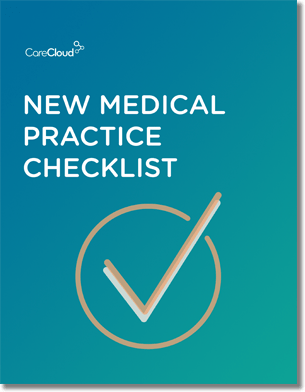As large medical practices search for the optimal Electronic Health Record (EHR) system, the upfront costs often becomes a discouraging hurdle for practices with low budgets to invest in such costly systems and software, limiting them from reaching their maximum potential. However, transitioning to a new system need not be as intricate, costly, or confusing, as perceived initially. In this rapidly changing era of technology, many medium to large medical practices are finding web-based EHR systems to be the perfect solution for their clinical and operational needs.
Cloud-Based EHR vs. Client-Server:
EHR structures broadly fall into two categories: cloud-based and Client-server. Cloud-based systems keep statistics externally, on hand through the Internet, while client-server structures store records in-house. Despite the popularity and acceptance of in-house servers, medical practices are increasingly favoring the cloud for diverse reasons.
Benefits of Cloud-Based EHRs in 2024:
Simpler Implementation:
Web-based EHRs are exempt from the need for hardware or software installation, ensuring a quicker and more sincere implementation method. Accelerated implementation reduces interruptions in cash flow, boosting a faster return on investment in comparison to conventional structures.
Tremendous Up-Front Savings:
Cloud-based EHRs incur little value fragmentation compared to client-server structures. Like bills under software program as a service (SaaS), monthly subscription expenses replace excessive setup charges.
Significantly Reduced IT Requirements:
Cloud-based structures put off the need for an in-house crew of IT professionals. Automatic updates make sure practices run on the ultra-modern software without the hassle of manual installations.
Superior Accessibility and Collaboration:
Secure admission from any device with a web connection enhances collaboration among physicians, workers, and patients. Improved care coordination is accomplished with the aid of accessing the system past the confines of the office.
Simplified Scalability:
Web-based EHRs facilitate the expansion of large medical practices without going down the path of complex IT growth procedures to accommodate needs of your healthcare organization each time it grows. Flexibility allows practices to grow seamlessly, adapting to new users, doctors, or locations.
Security Assurance:
Cloud-based EHRs provide sturdy security features, ensuring HIPAA compliance through bank-level safety and high-degree encryption. Data facilities confirm more secure storage of data compared to unencrypted client-server structures, especially in the occasion of a catastrophe.
ARE WEB-BASED EHR SYSTEMS SAFE?
Web-based Electronic Health Record (EHR) systems were subject to doubts amongst a few physicians, frequently due to security issues. However, it’s far important to apprehend that cloud-based EHR systems can provide greater safety as compared to conventional client-server systems and paper facts.
One massive element of the security supplied via web-based EHR systems is their compliance with the Health Insurance Portability and Accountability Act (HIPAA). Advanced security features and encryption strategies are used to shield information in these systems, making it unreadable in case of a security breach. In contrast, client-server structures may additionally lack encryption and are easy to access due to the bodily location where they’re saved.
In case of fighting a disaster, cloud-based EHR systems provide a greater secure solution than paper or client-server data. Data stored within the cloud is backed up securely in multiple locations, imparting resilience within the face of natural disasters or fires. On the opposite hand, client-server information, in particular at some point of transport to storage are extra prone to breaches.
It is noteworthy that people already trust the cloud, which has a considerable amount of private information. Email services like Gmail and Yahoo utilize cloud storage, and people save personal information for online banking, purchasing, and social media usage.
Ultimately, cloud-based EHR systems present numerous benefits for users throughout various industries, inclusive of medical practices. These advantages include cost savings, advanced data accessibility, and heightened protection. Regardless of the selected solution, opting for a certified EHR for medical use remains critical because it guarantees compliance with criteria for financial incentives and allows away from penalties associated with meaningful use.
Conclusion
As of 2024, the EHR landscape is witnessing a pronounced shift in the direction of cloud-based solutions, supplying medical practices with a considerable number of benefits in terms of price savings, data accessibility, and safety. The attraction of these systems lies in their fee-effective and streamlined nature, making them an attractive option for both upgrading existing structures and enforcing EHRs for the first time. Cloud-based EHRs not only lessen infrastructure prices but also additionally enhance record accessibility by enabling seamless fact retrieval from a couple of locations.
Moreover, their advanced security features, which include strict data compliance, enhance their enchantment by ensuring record protection and confidentiality. The healthcare enterprise is more and more embracing digital transformation, and staying on the pinnacle of evolving technology and regulatory necessities will become vital for healthcare experts searching to optimize their operations through efficient and secure EHR solutions.

Do you know what you need when setting up a new medical practice?



